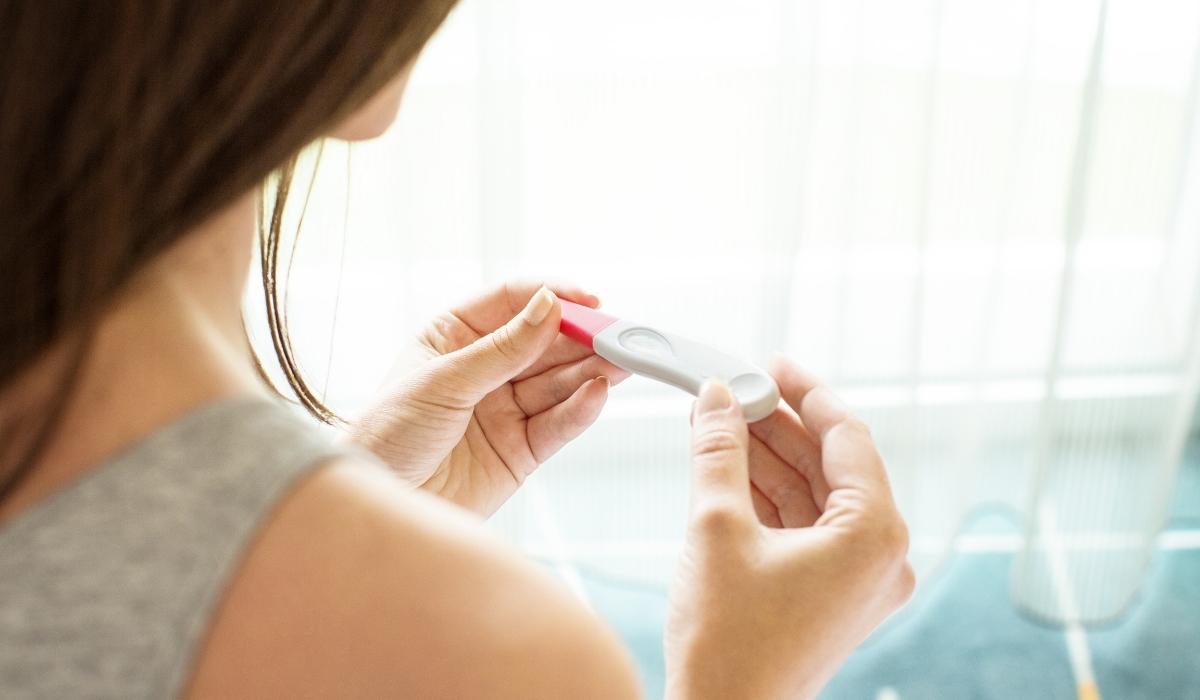Advertisements
For many women, taking a home pregnancy test is a time of anxiety, anticipation, and sometimes relief. Whether planning a family or checking after an unexpectedly late period, knowing exactly how and when to take the test can make all the difference in getting an accurate result.
In this article, we'll break down all the details about home pregnancy tests so you can take them with confidence.
Advertisements
How Does a Pharmacy Pregnancy Test Work?
Pregnancy tests sold in pharmacies work by detecting the hormone human chorionic gonadotropin (hCG) in urine. This hormone begins to be produced by the body after the embryo implants in the uterus, which usually occurs between 6 and 12 days after fertilization.
Most modern tests are extremely sensitive, detecting minimal amounts of hCG, typically as low as 25 mIU/ml (milliinternational units per milliliter). It's important to note that hCG concentration doubles approximately every 48–72 hours in the first few days of pregnancy, making tests more accurate as time goes on.
When is the Right Time to Get Tested?
Timing is crucial when it comes to pregnancy tests. Taking one too early can result in a false negative, causing confusion and unnecessary anxiety.
Advertisements
The Missed Period Rule
The most reliable guideline is to wait until the first day of your missed period. By this time, if fertilization has occurred, hCG levels are usually high enough to be detected by most commercial tests.
For women with regular cycles, this means waiting approximately 14 days after ovulation or unprotected intercourse. This period corresponds to the time required for fertilization, implantation, and initial hCG production at detectable levels.
Early Detection Tests
There are tests on the market that promise results up to 6 days before a missed period. These are more sensitive and can detect very low concentrations of hCG. However, even these tests have limitations:
- 1 day before delay: accuracy approximately 95%
- 2 days before delay: accuracy approximately 90%
- 3 days before delay: accuracy approximately 82%
- 4 days before delay: accuracy approximately 51%
- 5 days before delay: accuracy approximately 33%
As we can see, the earlier the test is taken, the less accurate it is. Therefore, even with a negative result from early tests, it is recommended to retake the test on the first day of a missed period.
How to Choose the Ideal Pregnancy Test
Currently, we find several types of tests in pharmacies, with varying prices and features. Understanding the differences can help you choose the most appropriate one for your situation:
Strip Tests (Midstream)
These are the most common and generally the cheapest. They consist of a strip that must be placed in the urine stream or dipped into a container with collected urine. The result appears after a few minutes in the form of lines or symbols.
Digital Tests
They offer a digital reading of the result, usually with the words "Pregnant" or "Not Pregnant," eliminating the need to interpret lines or symbols. They're more expensive, but can be easier to read.
Tests with Weeks Indicator
In addition to indicating pregnancy, they estimate how many weeks ago conception occurred, based on hCG levels. They generally indicate: 1-2 weeks, 2-3 weeks, or 3+ weeks since conception.
High Sensitivity Tests
They can detect very low concentrations of hCG (10 mIU/ml or less), allowing for earlier results. They are ideal for women eager for quick results or who have been trying to conceive for some time.
Step by Step: How to Take the Test Correctly
Performing the test correctly is essential for obtaining reliable results. Follow these steps carefully:
1. Choose the Right Time of Day
First morning urine contains the highest concentration of hCG, making it ideal for testing. If this isn't possible, try to go at least 4 hours without urinating before testing at another time.
2. Read the Instructions Carefully
Each test may have its own specific procedures. Some require the strip to be dipped in urine for exactly 5 seconds, others for 20 seconds. Some require you to replace the cap after use, others don't. Read carefully before beginning.
3. Collect Urine Properly
You can place the test directly in your urine stream or collect the urine in a clean, dry container and then dip the strip as directed. Make sure the absorbent area of the test is completely in contact with the urine for the indicated time.
4. Keep the Test in the Correct Position
After collecting the urine, place the test on a flat surface with the result window facing up. This prevents the liquid from spreading unevenly and affecting the reading.
5. Respect Reading Time
Each test specifies how long to wait to read the result—usually between 1 and 5 minutes. Do not interpret the result before the minimum time or after the maximum time indicated, as this can lead to misinterpretation.
6. Interpret the Result Correctly
- One line: usually indicates a negative result (not pregnant)
- Two lines: usually indicates a positive result (pregnant), even if the second line is very light or faint
- Plus symbol (+): indicates positive result
- Minus symbol (-): indicates negative result
- Words “Pregnant” or “Not Pregnant” on digital tests
It's important to note that any line, no matter how faint, in the test area generally indicates a positive result. The intensity of the line doesn't necessarily reflect the "strength" of the pregnancy.
How to Interpret the Results
Correctly interpreting results is essential, especially since there are situations that can lead to false positives or false negatives.
Positive Result
A positive result is rarely a false positive. If the test indicates pregnancy, the likelihood of you actually being pregnant is high. It's recommended to schedule a doctor's appointment to confirm the pregnancy and begin prenatal care.
Rare causes of false positives include:
- Biochemical pregnancy (when fertilization occurs, but the embryo does not develop)
- Medications containing hCG (some fertility treatments)
- Certain medical conditions such as hCG-producing tumors
- Ectopic pregnancy (outside the uterus)
- Error performing the test (reading after the maximum recommended time)
Negative Result
A negative result may mean you're not pregnant or that the test was taken too early. If the result is negative, but your symptoms persist or your period hasn't arrived, it's recommended:
- Wait another 3-7 days and repeat the test.
- Use a more sensitive test
- Perform the test with the first urine of the morning
- Consult a doctor if your period continues to be late.
Common causes of false negatives:
- Test performed too early
- Very dilute urine (due to excessive fluid consumption)
- Expired or incorrectly stored test
- Not following the instructions correctly
- Late ovulation in that particular cycle
Common Pregnancy Symptoms
In addition to a late period, other symptoms may suggest pregnancy and prompt a test:
- Nausea, especially in the morning
- Tender or swollen breasts
- Unusual fatigue
- Frequent urination
- Food cravings or aversions to certain foods
- Nausea with specific odors
- Dizziness or fainting
- Mood swings
It's important to remember that these symptoms can have other causes, such as stress, hormonal changes unrelated to pregnancy, or even side effects of medications.
When to See a Doctor
After a positive result, it's best to schedule an appointment with a gynecologist or obstetrician to confirm the pregnancy through a blood test or ultrasound and begin prenatal care. This appointment is essential for:
- Confirm pregnancy and estimate the expected date of delivery
- Assess risks and pre-existing conditions
- Start folic acid supplementation and other vitamins if necessary.
- Receive guidance on nutrition, exercise and initial care
If the result is negative, but you continue to experience pregnancy symptoms or your period has not arrived within 1–2 weeks of testing, it's also recommended to see a doctor. A missed period may be related to other medical conditions that require attention.
Frequently Asked Questions About Pregnancy Tests
Can I Trust the Result of a Pharmacy Test?
Pharmacy tests are more than 99% accurate when performed correctly and at the right time. However, usage errors or testing too early can compromise reliability. If in doubt, it's best to repeat the test a few days later or seek medical confirmation.
Will the result change if I wait longer?
If you take the reading after the maximum recommended time (usually 10 minutes), the result may be altered due to the evaporation of urine on the test strip, creating what is known as an "evaporation line." This line can be mistaken for a positive result when it is actually just an artifact.
Can Medications Interfere with the Results?
Most medications don't affect pregnancy test results. Important exceptions include fertility drugs containing hCG, which can cause false positives. Antibiotics, painkillers, birth control pills, and most common medications don't affect the result.
Can I Be Pregnant Even with a Normal Period?
Although rare, minor bleeding may occur at the time of embryo implantation, which can be mistaken for menstruation. However, this bleeding is usually lighter and shorter than a normal period. Regular and full menstruation usually indicates the absence of pregnancy.
Conclusion
Taking a pregnancy test is a significant moment in any woman's life. Knowing exactly when and how to do it correctly provides more reliable results and reduces anxiety associated with potential misinterpretation.
Remember: the ideal time to test is after the first day of a missed period, preferably using the first urine of the morning and carefully following the manufacturer's instructions. If the result is positive or if you have persistent doubts even with a negative result, consult a doctor for appropriate guidance.
Pregnancy is a journey that begins long before the baby is born, and a home pregnancy test is just the first step. Regardless of the result you expect or desire, being well-informed is essential to making the best decisions for your reproductive health.







